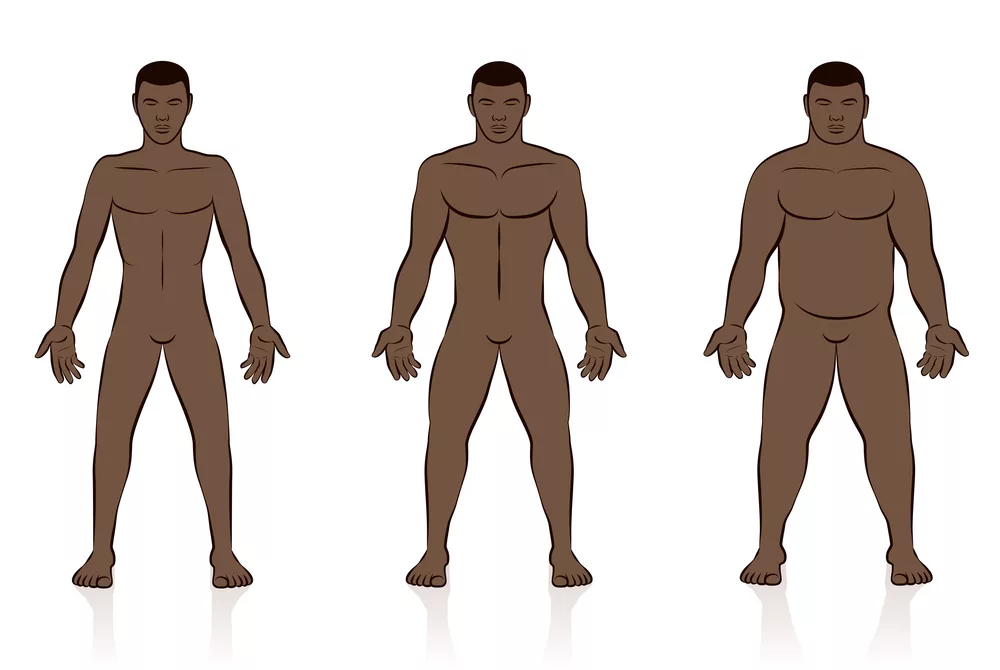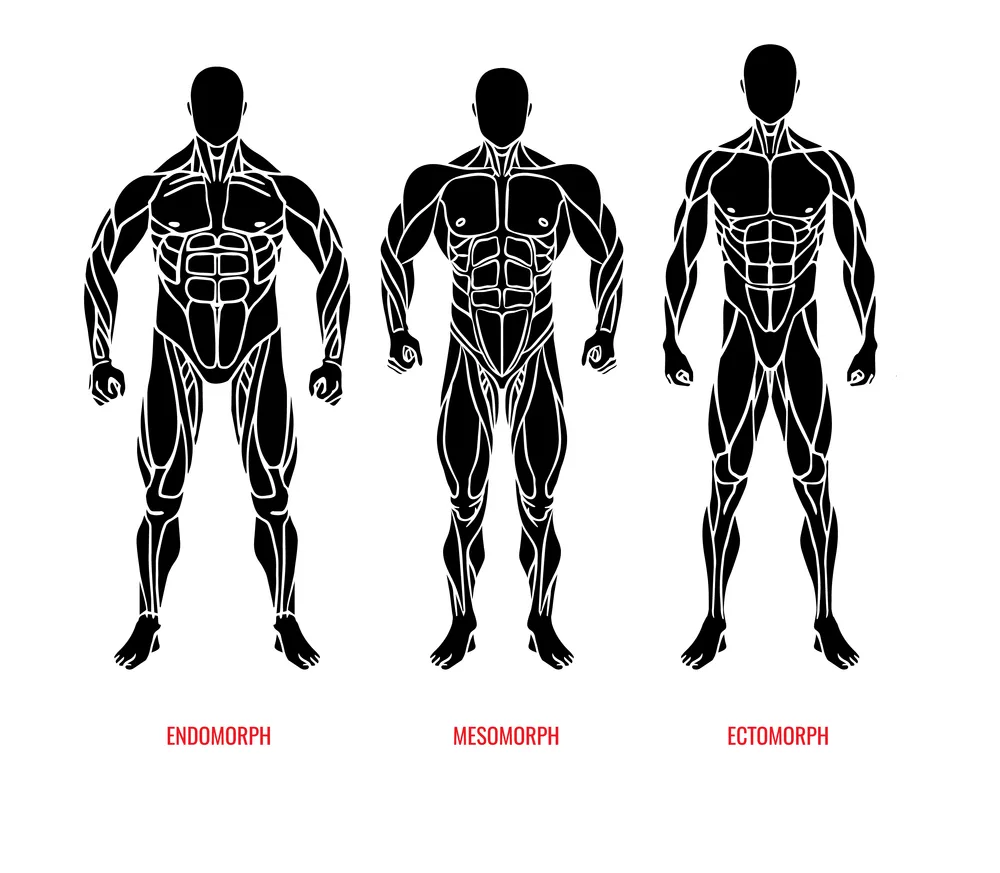Hey everyone! In this video it was arm day. For this workout video we decided to meet over at Edge Fitness in Deptford, NJ. As many of you know, we love to superset our workouts, especially our arm workouts. This means every time we complete a set of bicep exercises, we perform a complementary triceps exercise. It’s the best way to get the blood flowing! You can perform this workout by yourself, but it’s a tougher workout when you have partners. Pushing to the limit, less time between sets.
Don’t get hung up on the amount of weight. Feel free to reduce the weight and keep the reps high.
How To Get Bigger Arms Workout
-
Easy curl bar (20 Reps) Superset with 4 sets of Skull crushers (20 Reps)4 Sets
Try to perform these with as little rest as possible between sets. -
Incline curls4 Sets
10 to 15 Reps -
Overhead triceps extensions4 Sets
15 to 20 Reps -
Dumbbell curls high reps (30 Reps)4 Sets
10 Regular Curls, 10 Hammer Curls, 10 Cross Curls -
Triceps press-downs high reps4 Sets
20 Reps Minimum -
Triceps rope pulls4 Sets
20 Rep minimum -
Dumbbell preacher curls4 Sets
10 to 15 Reps
Have you tried this workout? I’d like to hear from you. Make sure you like, comment, and most importantly Subscibe! Click the button below.
You Might also like
-
Ectomorph, Mesomorph, & Endomorph: Beginners Guide To Body Types
Have you ever wondered why some people seem to gain muscle easily, while others struggle to lose weight no matter how much they exercise? The answer may lie in their body type. There are three main body types: ectomorphs, mesomorphs, and endomorphs. In this beginner’s guide, we’ll explore each body type, their characteristics, and the best exercises and diets for each one.
What Is An Ectomorph Body Type?
Ectomorphs are often referred to as “hardgainers” because they tend to have a harder time gaining weight and muscle mass compared to the other body types. They typically have a slim build, with narrow hips and shoulders, and a fast metabolism. Ectomorphs often have long limbs, a thin waist, and a small bone structure.
Characteristics of Ectomorphs:
- Difficulty gaining weight and muscle mass
- Fast metabolism
- Slim and narrow build
- Small bone structure
- Long limbs and thin waist
- Low body fat percentage
- Can appear “wiry” or “stringy”
Best Exercises for Ectomorphs: Ectomorphs should focus on exercises that promote muscle growth and weight gain. Compound exercises that work multiple muscle groups at once, such as squats, deadlifts, and bench presses, are ideal for ectomorphs. They should also incorporate high-intensity training and progressive overload into their workouts to stimulate muscle growth.
Here are some of the best exercises for ectomorphs:
- Compound Exercises: Compound exercises are exercises that work multiple muscle groups at once. These types of exercises are ideal for ectomorphs because they promote muscle growth and help to build overall strength. Examples of compound exercises include squats, deadlifts, bench presses, pull-ups, and rows.
- Heavy Weightlifting: Ectomorphs should aim to lift heavy weights with low to moderate repetitions to stimulate muscle growth. Lifting heavy weights will help to build muscle mass and strength, and it will also help to increase bone density.
- High-Intensity Training: High-intensity training, such as sprinting, HIIT, or circuit training, is also ideal for ectomorphs. This type of training can help to stimulate muscle growth and increase endurance.
- Progressive Overload: Ectomorphs should focus on progressive overload, which means gradually increasing the weight, reps, or sets over time. This will help to challenge the muscles and promote muscle growth.
- Rest and Recovery: Rest and recovery are also important for ectomorphs. They should aim to get enough sleep and rest days to allow their muscles to recover and grow. Overtraining can be counterproductive and hinder muscle growth.
Overall, ectomorphs should focus on exercises that promote muscle growth and build overall strength. A combination of compound exercises, heavy weightlifting, high-intensity training, progressive overload, and rest and recovery will help ectomorphs to achieve their fitness goals.
Diet Recommendations for Ectomorphs: To gain weight and muscle mass, ectomorphs need to consume more calories than they burn. Ectomorphs should focus on consuming nutrient-dense foods, such as lean proteins, whole grains, and healthy fats. They should also aim to consume a high amount of protein to support muscle growth. Ectomorphs may also benefit from consuming calorie-dense foods, such as nuts, avocados, and dried fruits, to increase their calorie intake.
Diet plays a crucial role in achieving fitness goals, especially for ectomorphs who struggle to gain weight and muscle mass. A proper diet will provide the necessary nutrients for muscle growth and will prevent the body from burning muscle for energy. Here are some diet recommendations for ectomorphs:
- Calorie Surplus: Ectomorphs should aim to consume more calories than they burn to gain weight and build muscle. It’s recommended that ectomorphs consume 500-1000 calories above their maintenance level to achieve a calorie surplus. This surplus can be achieved by adding calorie-dense foods to their diet, such as nuts, avocados, and whole grains.
- Protein Intake: Protein is essential for muscle growth, and ectomorphs should aim to consume 1.5-2 grams of protein per kilogram of body weight. This means that a 70 kg (154 lb) ectomorph should aim to consume 105-140 grams of protein per day. Good sources of protein include lean meats, poultry, fish, eggs, dairy products, legumes, and soy products.
- Carbohydrate Intake: Carbohydrates provide energy for the body, and ectomorphs should aim to consume complex carbohydrates, such as whole grains, fruits, and vegetables. These foods will provide a sustained release of energy and prevent the body from burning muscle for energy.
- Healthy Fats: Ectomorphs should also include healthy fats in their diet, such as omega-3 fatty acids found in fish, nuts, and seeds. Healthy fats are essential for hormone production and overall health.
- Meal Frequency: Ectomorphs should aim to eat 5-6 small meals throughout the day to provide a constant supply of nutrients for muscle growth. This will prevent the body from burning muscle for energy and will also prevent overeating.
Overall, ectomorphs should aim to consume a balanced diet that is high in protein, complex carbohydrates, and healthy fats. They should also consume more calories than they burn to achieve a calorie surplus for weight gain. A consistent diet combined with a proper exercise routine will help ectomorphs to achieve their fitness goals.
Overall, ectomorphs may have a harder time gaining weight and muscle mass compared to the other body types, but with a proper workout routine and diet, they can still achieve their fitness goals.
What is a Mesomorph?
Mesomorphs are often described as the “ideal” body type because they have a naturally athletic build and tend to gain muscle and lose fat relatively easily. They typically have a medium-sized bone structure, a wide shoulder-to-hip ratio, and well-defined muscles.
Characteristics of Mesomorphs:
- Naturally athletic build
- Medium-sized bone structure
- Wide shoulder-to-hip ratio
- Well-defined muscles
- Tendency to gain muscle and lose fat easily
- Efficient metabolism
Best Exercises for Mesomorphs: Mesomorphs excel in a variety of exercises, as their athletic build and efficient metabolism make it easier for them to build muscle and lose fat. They should focus on a balanced workout routine that includes both resistance training and cardiovascular exercises.
- Weightlifting: Mesomorphs tend to build muscle easily, so they should focus on weightlifting exercises that target specific muscle groups. Compound exercises like squats, deadlifts, bench presses, and pull-ups are also beneficial for muscle growth.
- Cardiovascular Exercises: Mesomorphs should also include cardiovascular exercises in their workout routine to maintain a healthy heart and promote fat loss. Running, cycling, swimming, and rowing are all great options.
- High-Intensity Interval Training (HIIT): HIIT workouts are also ideal for mesomorphs. HIIT workouts are short, intense bursts of exercise followed by a brief rest period. They help to increase metabolism, burn fat, and improve cardiovascular health.
Diet Recommendations for Mesomorphs: Mesomorphs tend to have a more efficient metabolism than other body types, which means they can consume more calories without gaining weight. However, it’s important for mesomorphs to maintain a balanced diet to support their fitness goals. They should focus on consuming a diet high in protein, complex carbohydrates, and healthy fats.
Overall, mesomorphs are naturally gifted with an athletic build and an efficient metabolism. To maintain their physique, they should focus on a balanced workout routine that includes both resistance training and cardiovascular exercises. Mesomorphs should also maintain a healthy diet to support their fitness goals.
What is an Endomorph Body Type?
Endomorphs are characterized by their curvy and rounded body structure, with a high body fat percentage and a slow metabolism. Endomorphs tend to have a softer and rounder appearance, with a wider waist, hips, and thighs. This body type has a tendency to gain weight easily and struggle to lose it, making weight management a major concern for endomorphs.
Endomorphs often have a greater appetite and may experience cravings for high-calorie foods, which can make it challenging to maintain a healthy diet. This body type also tends to have lower insulin sensitivity, which can lead to an increased risk of developing type 2 diabetes, high blood pressure, and heart disease.
To manage weight and promote overall health, endomorphs need to adopt a specific approach to training and nutrition. They may benefit from a higher protein and lower carbohydrate diet to promote satiety and reduce cravings. It’s also important for endomorphs to engage in regular exercise, including both cardiovascular and strength training, to increase their metabolism and build lean muscle mass.
Weight training is particularly important for endomorphs, as it helps to build lean muscle mass, which increases metabolism and burns more calories throughout the day. High-intensity interval training (HIIT) can also be effective for endomorphs, as it promotes fat burning and cardiovascular health.
It’s important to note that while endomorphs may face challenges in achieving their desired body composition, their body type also has its advantages. Endomorphs tend to have a higher level of strength and power due to their muscular build, which can be advantageous in certain sports and activities.
In summary, endomorphs are characterized by their curvy and rounded body structure, high body fat percentage, and slower metabolism. To manage weight and promote overall health, endomorphs need to adopt a specific approach to training and nutrition, including a higher protein diet and regular exercise that includes weight training and cardio.
Best Exercises for Endomorphs:
Endomorphs can benefit from a mix of cardiovascular and strength training exercises to promote weight loss, build lean muscle mass, and increase metabolism. Here are some exercises that endomorphs may find particularly beneficial:
- Resistance Training: Endomorphs should prioritize resistance training with weights, resistance bands, or bodyweight exercises. These exercises help build lean muscle mass, which increases metabolism and helps burn more calories throughout the day. Endomorphs can benefit from exercises such as squats, deadlifts, lunges, push-ups, pull-ups, and planks.
- High-Intensity Interval Training (HIIT): HIIT involves short, intense bursts of activity followed by periods of rest. This type of exercise can help endomorphs burn more calories and increase their metabolism. Examples of HIIT exercises include sprints, jumping jacks, and burpees.
- Cardiovascular Exercise: Endomorphs should include cardiovascular exercises such as running, cycling, or swimming to increase their heart rate and burn calories. Cardiovascular exercise can also improve heart health and overall fitness levels.
- Core Strengthening: Core strengthening exercises such as crunches, sit-ups, and planks can help endomorphs build a strong core, which can improve posture, balance, and stability.
- Yoga: Yoga can be an effective exercise for endomorphs, as it combines strength training, flexibility, and relaxation. Yoga can also help reduce stress and promote mental wellbeing.
It’s important for endomorphs to engage in a variety of exercises to avoid boredom and promote overall fitness. A combination of resistance training, HIIT, cardiovascular exercise, core strengthening, and yoga can provide a well-rounded fitness routine for endomorphs. However, it’s important to consult with a healthcare professional or certified personal trainer before starting a new exercise routine to ensure safety and effectiveness.
Diet Recommendations for Endomorphs:
Endomorphs tend to have a slower metabolism and a greater propensity for storing body fat, making it important to follow a healthy and balanced diet to support weight management and overall health. Here are some dietary recommendations for endomorphs:
- High Protein Intake: Endomorphs should aim to consume a diet that is high in protein to help promote satiety and build lean muscle mass. Good sources of protein include lean meats, poultry, fish, eggs, dairy, beans, and legumes.
- Low Carbohydrate Intake: Endomorphs may benefit from reducing their carbohydrate intake, particularly from refined carbohydrates such as white bread, pasta, and sugary snacks. Instead, focus on consuming complex carbohydrates such as fruits, vegetables, and whole grains.
- Fiber Intake: Endomorphs should consume a diet that is high in fiber, as this can help promote feelings of fullness and reduce cravings. Good sources of fiber include fruits, vegetables, whole grains, and legumes.
- Healthy Fats: Endomorphs should include healthy fats such as olive oil, avocado, nuts, and seeds in their diet. Healthy fats can help promote satiety and reduce inflammation in the body.
- Portion Control: Endomorphs should pay attention to portion sizes, as overeating can lead to weight gain. Consider using smaller plates and measuring portion sizes to help control calorie intake.
- Meal Timing: Endomorphs may benefit from consuming smaller, more frequent meals throughout the day to help regulate blood sugar levels and reduce cravings.
- Hydration: Endomorphs should drink plenty of water throughout the day to help support weight management and overall health.
It’s important for endomorphs to focus on consuming a balanced and healthy diet, while also considering their individual dietary needs and preferences. Consulting with a registered dietitian or healthcare professional can help endomorphs create a personalized and sustainable meal plan to support their health and fitness goals.
Embracing Your Unique Body Type: Why it Matters
Your body type is unique to you, and it plays an important role in your fitness journey. By understanding your body type and adopting the right approach to training and nutrition, you can optimize your fitness goals and achieve the results you desire. While it’s easy to get caught up in comparing yourself to others, it’s important to remember that everyone’s body is different, and there’s no one-size-fits-all approach to fitness.
Embracing your unique body type can help you achieve greater self-acceptance, confidence, and motivation in your fitness journey. Rather than trying to fit into a specific body type mold, focus on finding a training and nutrition plan that works best for your individual needs and preferences. This will not only help you achieve your fitness goals, but also promote long-term health and wellness.
Remember, your body type is just one aspect of your overall health, and it’s important to approach fitness with a holistic mindset. This means prioritizing your physical, mental, and emotional health, and focusing on creating sustainable lifestyle habits that support your overall wellbeing.
In conclusion, embracing your unique body type can help you achieve greater success and satisfaction in your fitness journey. By understanding and working with your body type, rather than against it, you can optimize your fitness results and improve your overall health and wellbeing.
-
Born Tough Gym Wear and Fitness Attire
There are scores of workout and fitness attire merchants out there. You could probably name a number of them right off the top of your head. Some of these manufacturers and designers make workout clothing that is, frankly, not making the cut. Or its too expensive and restrictive to really make purchasing it worthwhile.
But if you’re looking for a new style for the gym that looks sharp without weighing you down or getting in the way of your movement, then you should check out Born Tough.About Born Tough
Born Tough (BT) is a new brand. A new style. These are people who are making clothing for the modern day warrior, from the recreational runners to the elite athletes. As long as you want functional clothing for your functional fitness, then you are ready to make a switch to clothing that accelerates your training instead of holding you back.
This brand is going to be direct competition for other brands like GymShark and VQFit.
Born Tough makes minimalist exercise gear that tackles the old-age concept that sportswear should be baggy, disproportional or, on the other hand, clingy and uncomfortable. The clothing is designed for all body types and fits like a second skin. This allows both men and women to bend, twist, dance, jump, and run without needing to think about how they look. Born Tough clothing is stylish yet subdued, so you look ready for the gym, coffee, lounging, or travel all the time.
What makes Born Tough clothing a clear competitor in today’s market, however, is not just the look and feel. The designers have paid extreme attention to the details, including the need for technology. A lot of exercise clothing continues to ignore pockets deep enough for cell phones and mp3 players, headphone wires, and the like. Born Tough clothing integrates these features into their designs, so you can keep your important tech close without getting literally wrapped up in it.
A Look At Born Tough Products
Born Tough is just getting started, but they have already accumulated an array of merchandise for men and women that can fill your wardrobe.
I checked out the Born Tough Core Fit Short Sleeve, made with BT’s signature “Swift fabric,” which makes it lightweight and breathable for intense workouts in the gym. I tried it on and the fit is perfect. There’s nothing I would change about the construction, styling, or sizing. The shirt has an overlay, so it looks seamless. Additionally, the extended scallop hem prevents any embarrassing bunches or riding up from happening as you do your squats and other lower body exercises. Twists and turns couldn’t make this shirt ride up either.
Here’s a glimpse at the features of the Core Fit t-shirt:
- True to size
- 93% cotton and 7% modal spandex
- Flatlock seams
- Extended scallop hem
- 3M reflective logo on the back
- Ideal for a base layer
- Stretchable, breathable, and lightweight
- Minimalist design
- 30-day money back guarantee on all products
Presently, there’s more for men than for women. Men can look at a number of tops, bottoms, sleepwear, hoodies, and sweatshirts. Women have hoodies and sweatpants that come as a track set or separately. The inventory is growing, though, so there is bound to be more options for women in the future.
You can also get free shipping and free returns, too.
Final Thoughts
New brands who try to reshape the face of the fitness apparel industry always bring some excitement to the table, but Born Tough is already making a statement. The quality of the gear, the decent price, and the attention to detail are three things that make these products a smart purchase.
You don’t want miss what this company has in store.
Looking for more info and tips on fitness apparel? Then head over to my YouTube channel and hit the subscribe button. There’s plenty of videos for you to get and stay informed about what’s new in fitness. -
Transforming Your Health Passion Into Impactful Initiatives
In a landscape where health is of paramount importance, the impulse to channel your fervor for health and well-being into something meaningful should not be underestimated. RunThaCity delves into diverse ways to transform your enthusiasm into impactful initiatives. From the altruistic undertakings of volunteering to the entrepreneurial aspirations of starting a health-focused business, multiple paths can lead to noteworthy contributions to public health.Volunteer Your Services
Volunteering serves as an effective channel for converting your health-related enthusiasm into palpable change. Opportunities abound in this sector, from offering your skills in local healthcare facilities to participating in outreach programs within the community. The act of volunteering not only offers tangible support to healthcare operations but also presents a window into the transformative power of your passion as you witness first-hand the positive effect it can have on individual lives.Find a Job in the Field
In the quest to find a job that supports people’s health, it’s essential to present yourself as the ideal candidate who can make a positive impact in the healthcare industry or wellness sector. Before seeking such a meaningful position, ensure your first impression is impactful by creating a stellar and professional-looking resume online. Utilizing a free online resume template allows you to select from a library of professionally designed templates, tailored to reflect the compassion and professionalism required in health-supportive roles. These templates provide a foundation upon which you can add your own personal touch—inserting copy, photos, colors, and images that represent your commitment to enhancing people’s health. Crafting your resume online with these customizable options ensures you stand out as a dedicated professional ready to contribute to the wellbeing of others.Become a Health Entrepreneur
Taking an entrepreneurial approach can be a fulfilling way to marry your passion with business. Launching a business in this field isn’t just a passionate endeavor — it necessitates a strategic mindset. Vital elements include devising an insightful business plan and performing comprehensive market analysis, all aimed at ensuring the long-term success and societal impact of your venture.Share Your Health Knowledge
The currency of knowledge is especially valuable in the health sector. Employ various platforms to disseminate essential information, whether through digital avenues such as blogs and social media or more traditional methods like workshops and public talks. The sharing of credible information supports societal well-being, elevating the public’s understanding of health matters and influencing their decisions in a positive manner.Pursue Healthcare Careers
Choosing a formal career in healthcare or wellness opens doors to not only fulfilling personal ambitions but also making a lasting, positive impact on society. Whether one is a nurse attending to patients’ immediate needs, a chef guiding people towards healthier living, a therapist helping individuals manage emotional or physical challenges or a public health professional designing programs for community well-being, each role serves as a touchstone for lasting change. What sets these careers apart is the ability to offer meaningful improvement in the health and lives of individuals and communities, thereby fulfilling both professional and altruistic goals.Fundraise for Health Causes
Financial resources are a cornerstone for many health-related programs and research initiatives. Efforts to raise these funds can range from organizing charity events and community drives to launching crowdfunding campaigns. Through fundraising, you have the potential to accelerate research, facilitate healthcare delivery, and support medical interventions, leaving an indelible imprint on health-related endeavors.Become a Health Advocate
Policy advocacy holds the power to enact sweeping changes that can affect millions. Utilize your enthusiasm for health to campaign for transformative policies that address healthcare accessibility, preventive health measures, and social disparities in healthcare. Align yourself with organizations dedicated to these causes, and use your influence to sway public opinion and legislative decisions. Channeling your enthusiasm for health into meaningful contributions is not only commendable but also impactful. Through varied paths — whether volunteering, initiating a business, sharing valuable knowledge, etc. — you contribute to a tapestry of improved health and well-being for the community and society at large. Each of these avenues offers unique rewards and challenges but holds in common the potential for significant, enduring impact. Through these endeavors, you help shape a world that is not only healthier but also more aware and proactive in its approach to well-being. At RunThaCity, we believe that fitness and sportbikes are not just hobbies, but a way of life. Visit our website to learn more about both today!SelfCaring.info
Brad, is a guest contributor for RunThaCity.com. He is passionate about empowering individuals to reach their full potential through self-care.
Brad's expertise stems from his personal journey and a genuine desire to help people flourish. He now shares his insights through [link to selfcaring.info, if available] and various guest posting opportunities.













